Photie Man: 50 Years of Tom Wood, Walker Art Gallery, Liverpool, 20 May 2023 – 7 Jan 2024
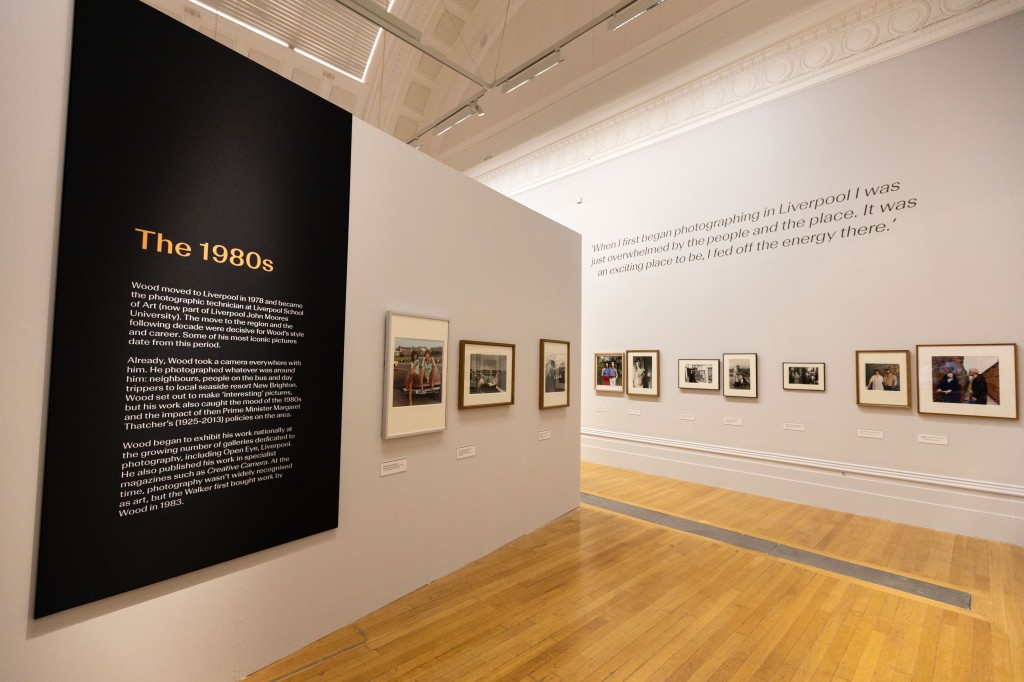
Photo: Robin Clewley
By Kenn Taylor
Even if you’ve not heard of Tom Wood, the photographer now subject to a huge retrospective at the Walker, you’re likely to have come across his images: young sharply-dressed folks confidently posing for the camera; dancers lit up by flash in an 1980s nightclub; a grandparent and child clinging to each other as they stare through a bus window.
Wood hails from County Mayo, in Ireland, and he’s exhibited everywhere from the USA to the Netherlands, China to France. Yet, as he’s best known for his images of Merseyside, it’s fitting this — the most comprehensive show of his work ever — should be staged in Liverpool.
Born in 1951, Wood moved from Ireland to Cowley, Oxford at a young age with his family. After working in a tax office and the local car factory, he was encouraged to take up art and studied painting in Leicester from 1973-76. He borrowed a camera, initially to record his paintings, and began to experiment with the medium that would dominate his creative life.
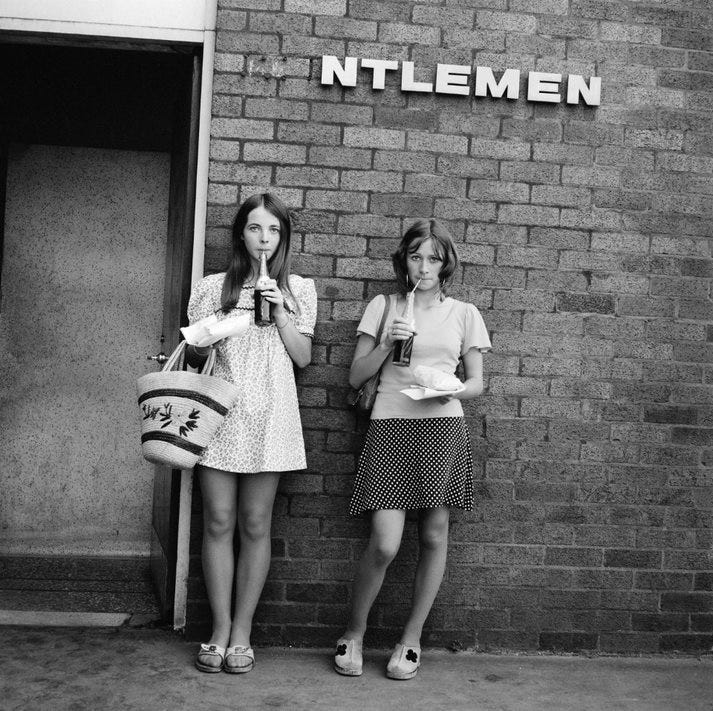
‘NTLEMAN. Photo: Tom Wood
The first gallery in the Walker show, ‘The 1970s’, covers Wood’s earliest work, much of it black and white. Even in these first pictures, his talent for capturing people’s character in a single shot is evident. ‘NTLEMAN’, featuring two young women posing beneath a broken sign for the men’s toilets, was taken by Wood in Cowley in 1973 on the second ever roll of film he shot; it remains one of his most well-known works. His ability is evident even in the small, now discoloured, prints from a season he spent working as a holiday camp photographer.
The second gallery, ‘The 1980s’, marks Wood’s move to Liverpool in 1978 after gaining employment as a technician in the School of Art (now LJMU). This period saw him starting to also work in colour, in works such as in ‘Not Miss New Brighton’ from 78-79. Colour was then still considered suspect in the world of ‘art’ photography, but Wood has said it was always important to him.
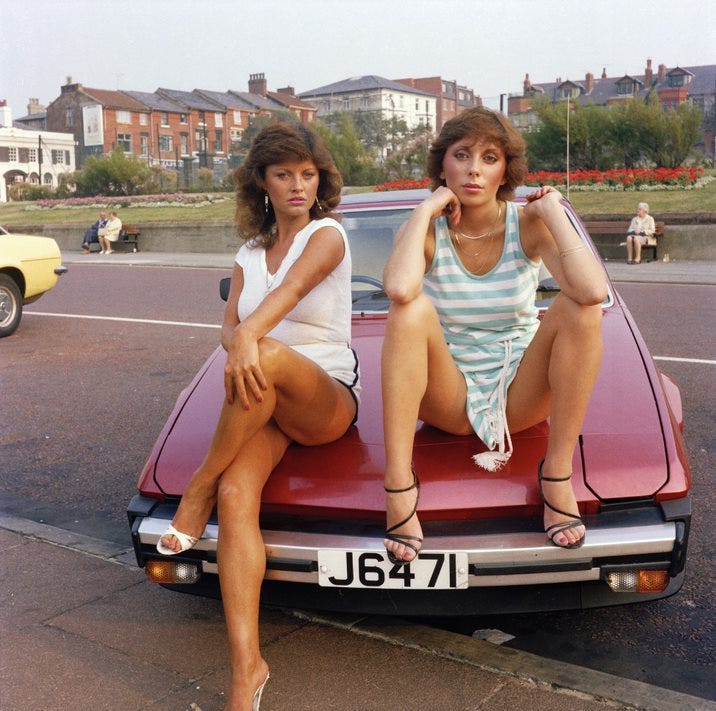
Not Miss New Brighton. Photo: Tom Wood
This, the largest gallery, contains some of Wood’s most well-known works from the 25 years he then spent living in and continually photographing Merseyside. While his images of cocky lads like ‘Mark and the gang’ and ‘Lads at railing, Scotland Road’ are some of the best photographs of that aspect of the area’s culture, unlike many image makers who briefly descend on Merseyside with only stereotypes in mind, Wood captures a much more diverse range of people and places across the region, from the sparkling ‘Furcoatsisters’ to the serious and proud-looking ‘The Staff of Secombe Café’ to the even more proud and pleased ‘Couple with new baby (actually first day out without the baby)’ and the 80s alternative fashions of ‘Mike and Kerrie — Every Man and Woman is a Star’.

Couple with new baby (actually first day without the baby) Photo: Tom Wood
The exhibition’s title reflects the fact that Wood became known as ‘the photie man’ in the area, a figure so familiar that people willingly posed for him or at least didn’t bat an eyelid when he was snapping away. Wood offered prints to many of his subjects and took pictures at local weddings and christenings, charging only for the price of the film, all of which helped him to develop an important reciprocal relationship with his subjects. Some of Wood’s most evocative images, like ‘Seaview Cafe (Not many Saturdays off)’ from 1984 are of families on days out in New Brighton. The openness people display within Wood’s viewfinder speaks time and again to an ease and familiarity between photographer and subject.
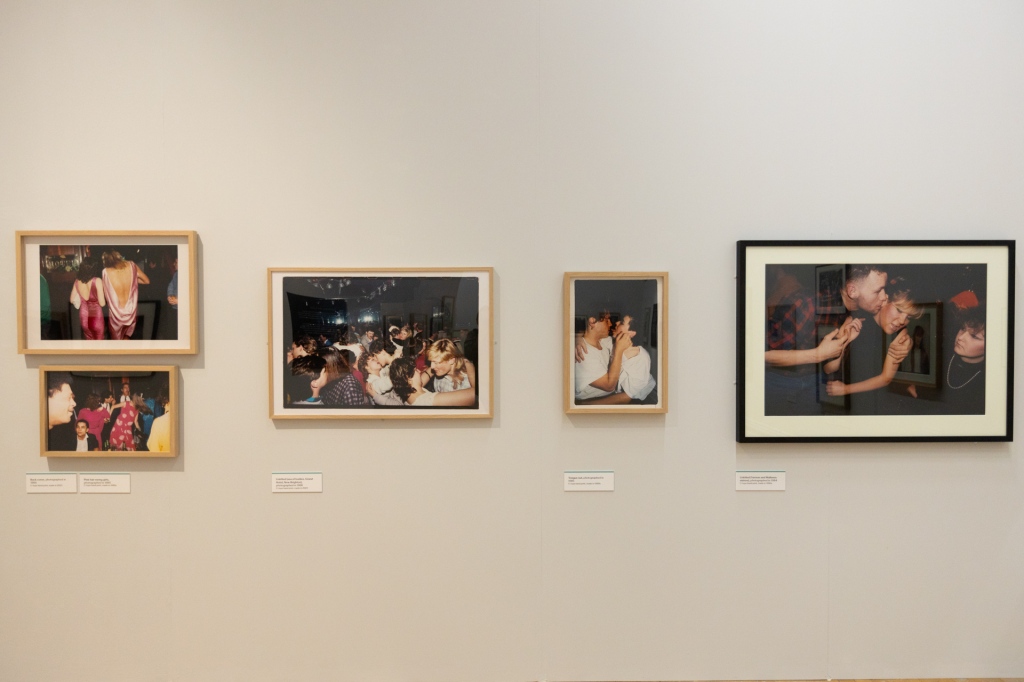
Some of Tom Wood nightclub images from the exhibition. Photo: Robin Clewley
The pictures he took in New Brighton’s nightclubs, candidly capturing those fleeting moments of flirtation, rejection, humour and introspection, were facilitated by Wood being a regular face in those clubs. These images received international acclaim when they were published in 1989 as the photobook Looking for Love. His ‘Untitled (sea of bodies, Grand Hotel, New Brighton)’ almost elevates the scene of a packed nightclub to the level of an epic history painting. And in All Zones Off Peak, the photographs Wood took on his innumerable bus journeys around the region have a powerful quality of light, such as ‘Towards Netherton’ and ‘Vauxhall Circular’, in which the red hair of the subject is echoed by a touch of sunlight on the seat fabric.
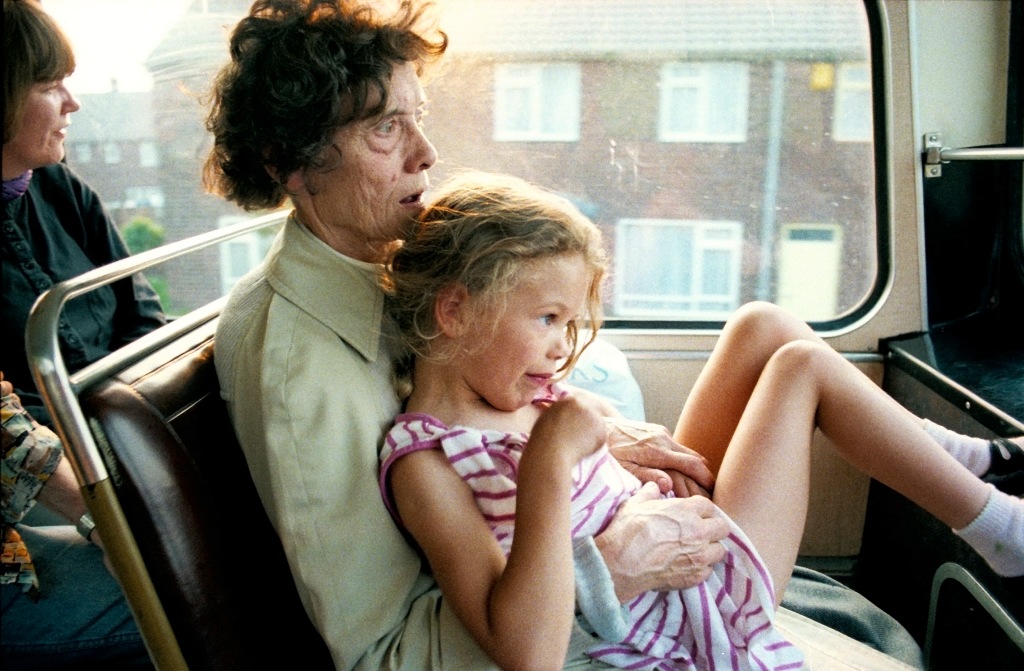
Towards Netherton. Photo: Tom Wood
Wood rarely undertook commissions, but two that he did take on resulted in some of his most poignant images. For these he entered two closed worlds in Merseyside, Birkenhead’s Cammell Laird shipyard and the large psychiatric hospital at Rainhill, photographing the end of these institutions in their original form. Wood’s recurring theme of the space between generations comes across more powerfully in his Laird’s images. Picturing the yard’s last batch of young apprentices and an older man at the same workbench used by his father before him, Wood captures them all facing uncertainty as the endpoint is reached of nearly 200 years of employment and social structure.
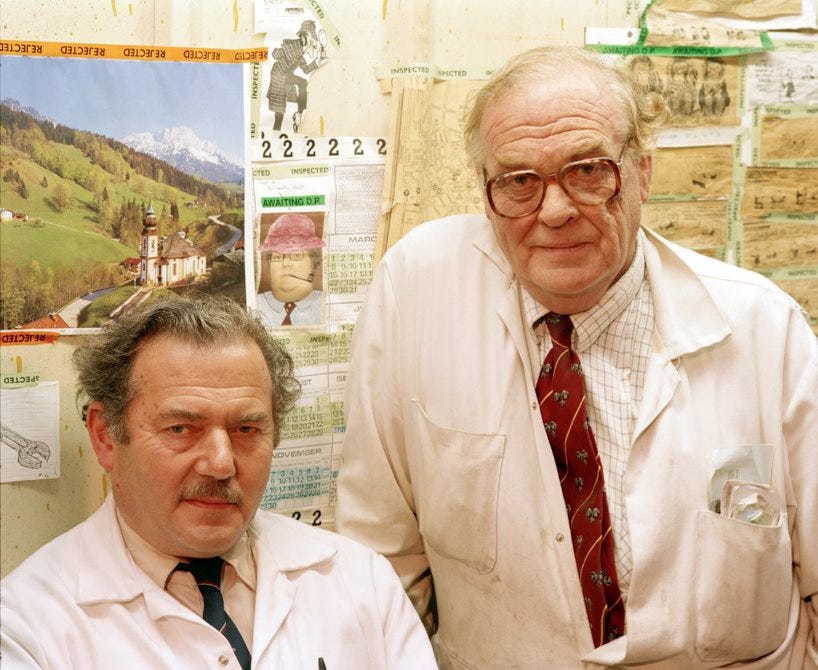
From the Cammell Laird series. Photo: Tom Wood
The images from Rainhill Hospital are prudently placed in a discreet area of the gallery. All these photographs were taken with permission from patients or their families. Most of the residents are older and, while the majority should have never been institutionalised, Wood depicts them also facing an uncertain future as the place that in some cases they’d known for most of their lives closes around them. Wood was contracted to take pictures at Rainhill for six weeks; he ended up engaging with the community there for two years.
The final gallery contains Wood’s work from 2003 onwards, when he had left Merseyside and moved to Wales. While his scenes of village and town life in Wales and his native Ireland have a similar tone to that of his Merseyside work, Wood’s panoramic landscapes from the period have an expansiveness which contrasts with the intimacy of his portraits. Yet they still evidence a strong eye for detail, as in the tractors rendered tiny by the imposing landscape of ‘Moon Moving Over Iron Age Farming’ from 2006.
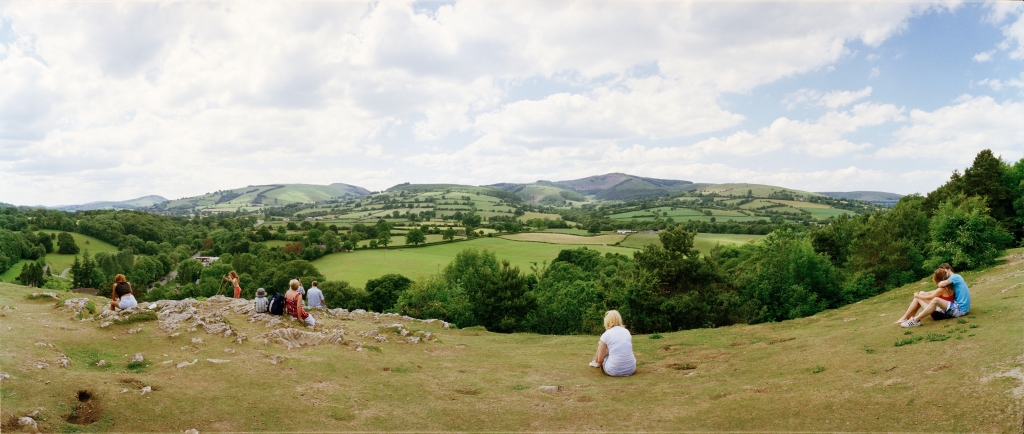
Surrounded by the varied images of the exhibition, some words keep coming back. Words like strength and dignity. Humour too, his work isn’t po-faced, nor overly sentimental. Wood’s images are inherently about the variety and commonality of the human experience. Youth and age. Passion and boredom. Waiting for a bus or to be served a hotdog made epic.
The exhibition’s concluding section includes ‘The Hospital’, a poem by Patrick Kavanagh, which Wood says reflects some of what motivates his work. Its closing lines are:
For we must record love’s mystery without claptrap,
Snatch out of time the passionate transitory.
Tom Wood is undoubtedly one of the most respected and important visual artists to have been based in Merseyside in the past fifty years. The region is lucky to have had a photographer of such powerful talent capture its life over a couple of decades, reflecting Merseyside in artworks that have resonated around the world. At the show’s exit, Wood acknowledges his indebtedness to all those who appeared before his camera and inspired him to create these photographs.
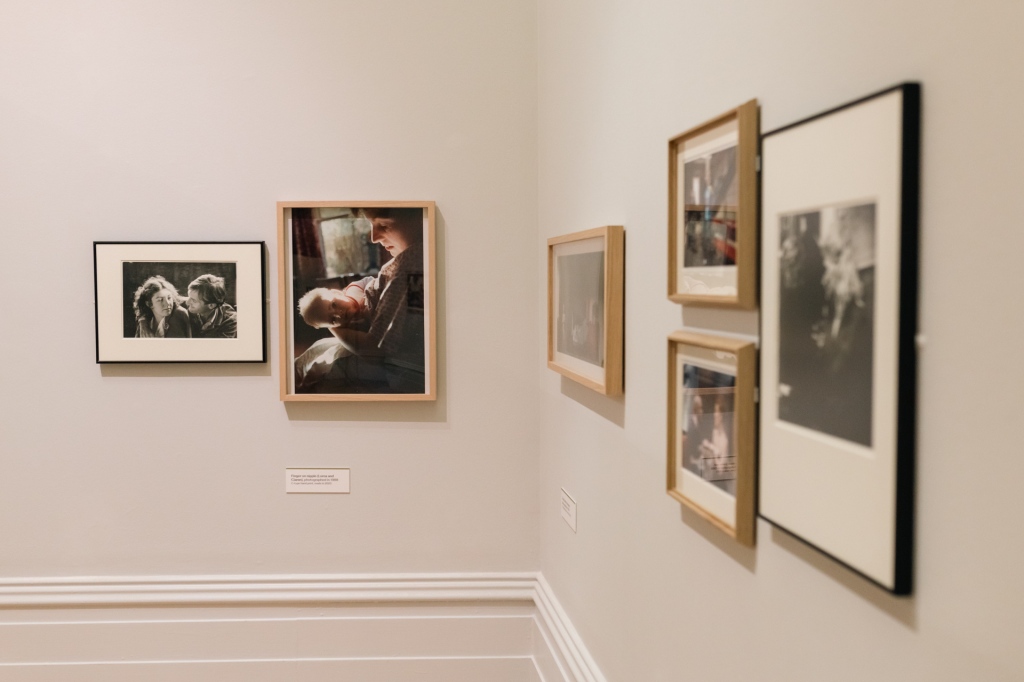
Photo: Robin Clewley
After all, to borrow from one his titles, in Wood’s images, every man and woman (and child) is a star.
This piece was published by the Liverpool Post in June 2023.